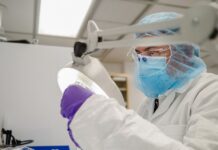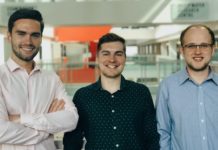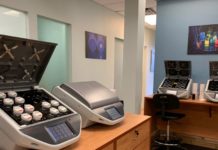While universities and colleges are known as centres of learning and research, they are also increasingly seen as engines of economic growth. From Raleigh-Durhamin North Carolina to Silicon Valley in California, the ideas that they develop and nurture have a direct and profound economic impact on their communities. Two excellent universities, Queen’s and the Royal Military College of Canada (RMCC), and a well-regarded community college, St. Lawrence, call Kingston home. In its 2016 strategic plan, the Kingston Economic Development Corporation identified four high priority areas of potential growth for Kingston: agri-business, defence/information communication technology, sustainable emerging technologies (in particular what is commonly called CleanTech) and health care. All are areas where Kingston’s post-secondary institutions have particular strengths. To leverage these, Kingston has been taking active steps to increase its collaboration with its post-secondary partners.
“That has been a priority of mine from day one,” says Mayor Bryan Paterson, himself a PhD in economics and an assistant professor at RMCC. `On January 24, 2017, the City of Kingston and Queen’s University signed a memorandum of understanding, committing the city and the university to working together to promote innovation and business in Kingston. The city signed a similar agreement with St. Lawrence College in September of this year. These memoranda, says Paterson, create “a way for senior staff at both the city and the schools to get together and see what’s going on. And it gives an opportunity for creative partnerships in the future.
“We can do this in Kingston because it’s small enough that we can all get to know each other,” says Paterson. “Access is easy, and it’s not hard for us to get together and talk about what we need to do.”
Among potential co-ventures Paterson can see the city getting involved with Queen’s through Innovation Park, the university’s well-regarded incubator for startups, which has launched a number of companies since its creation in 2008. “There’s opportunity to do a lot more at Innovation Park,” he says. One such idea might be for the city to work with the university to develop vacant land near the park so it can expand its activities.Similar opportunities might be found at St. Lawrence College, which is currently undergoing the creation of a Student Life and Innovation Centre, the largest construction project since the College opened in 1967. Another key priority for the city will be retaining the talent that the Kingston’s post-secondary institutions produce. To do that, the city is working actively to create internships and job opportunities for young people in Kingston that will make it easier for them to stay in the city after graduation. In October the city announced the Mayor’s Innovation Challenge, a program open to current students and recent graduates of the city’s three post secondary institutions, which seeks proposals on solving challenges facing the city – including how to retain young talent. The winners will be hired by the city for the summer to implement their ideas. These will be the first of many opportunities to come.
Memoranda of understanding, internships, better informal connections. These are all seemingly small steps, but steps that taken together will in the words of Mayor Paterson, transform Kingston, into a – actually make that the – “smart and livable 21st century city.”
















